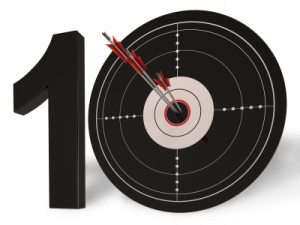There is plenty of information about how to get a job. But it all boils down to 10 things that are essential for finding the job you want. You will see below what they are.
- Growing network—most jobs are obtained by networking. Grow your network and stay in touch with your network. It’s a reciprocal connection that you are building not “what’s in it for me” be willing to help wherever you can.
- Targeted resume and cover letter—have a basic resume that can be tweaked for each position for and the cover letter needs to be modified, as well. Use keywords from the job description in both.
- Interview skills—prepare and practice for your interviews by learning as much about the company as you can; having interview clothes that you are comfortable in and make you look your best; have p-a-r stories that show how you have done your job well; research interview questions for your position and practice answering them.
- Positive mindset—remain optimistic that something good is going to happen. People shy away from people who are desperate. They don’t want to risk their reputation on someone who has negativity written all over them.
- Volunteer—use your skills to assist another person or organization pro bono and it will fill the gap in your résumé. It offers you an opportunity to meet people that may be able to help you. The best thing is you will feel better about yourself. There is a correlation between helping others and feel good.
- Join a job search networking support group—you can expand your network, learn tips and tricks to boost your job search, get leads on jobs, and gain the emotional support along with the encouragement you need at this difficult time.
- Social media—LinkedIn will help you grow and keep track of your network and help you with research for interviews. Many recruiters post job openings on Twitter.
- Be appreciative for any help you get—whether it’s thanking an interviewer or someone who have you a lead, express your appreciation for any help you get. It is the best way to make sure you will continue receiving help.
- Know what makes you unique—the hiring manager wants to hire the best person for the job. Be able to articulate what unique skill, ability, or experience you bring to the job that no one else has.
- Take care of you—this is an extremely stressful time. Your health is vital to your job search success. It is essential that you eat healthy, exercise regularly, and get the rest you need. If you have all the above but look sickly or depressed, you won’t get the job.
It takes time and patience but with the right tools your job search will have the momentum it needs to keep you motivated and on task. By incorporating the above in your job search, you will be sitting at your new job before you know it.
image: http://www.freedigitalphotos.net/ Stuart Miles






